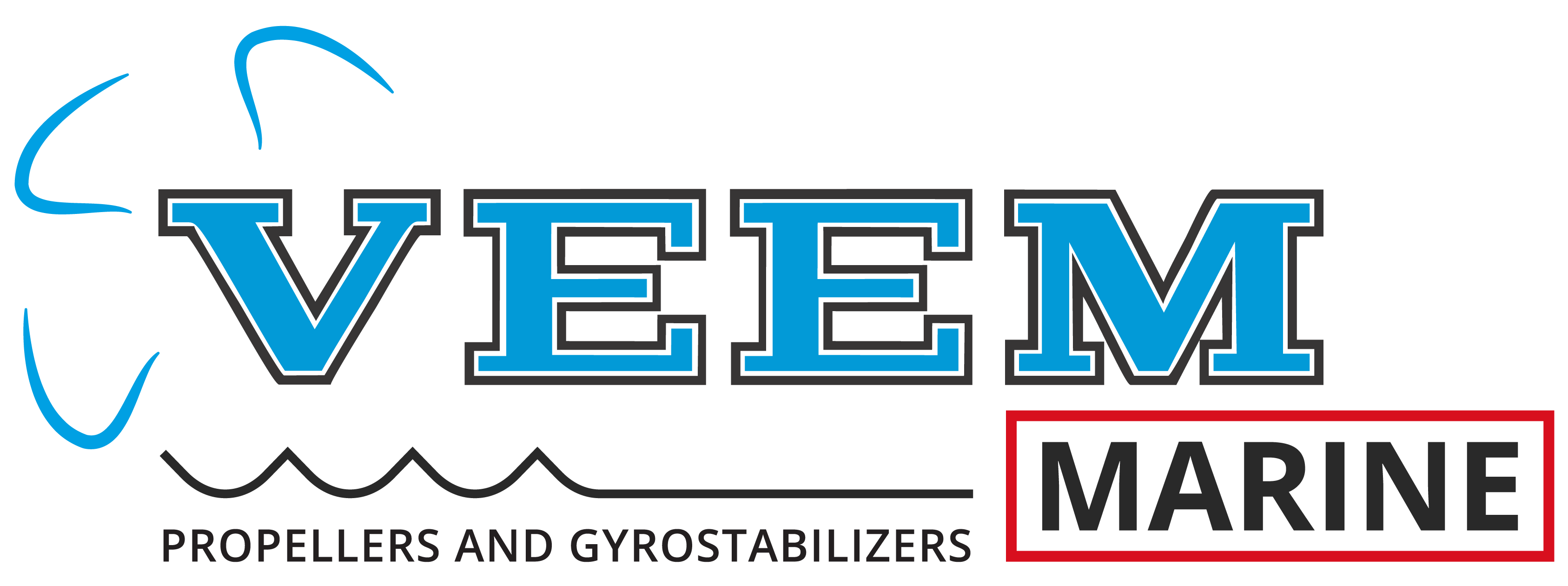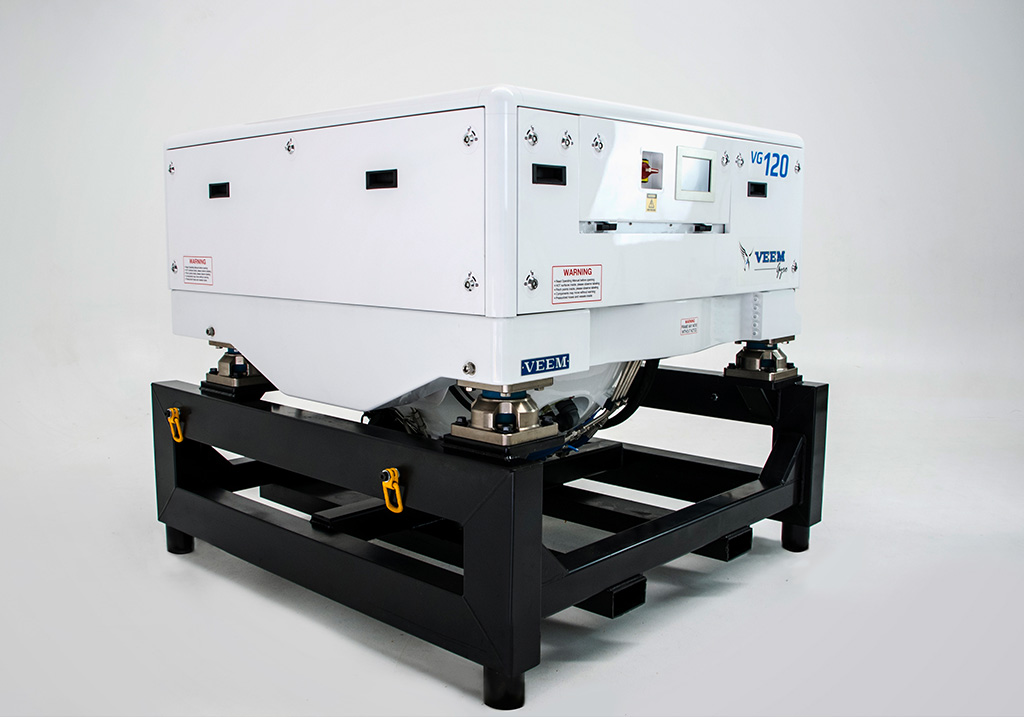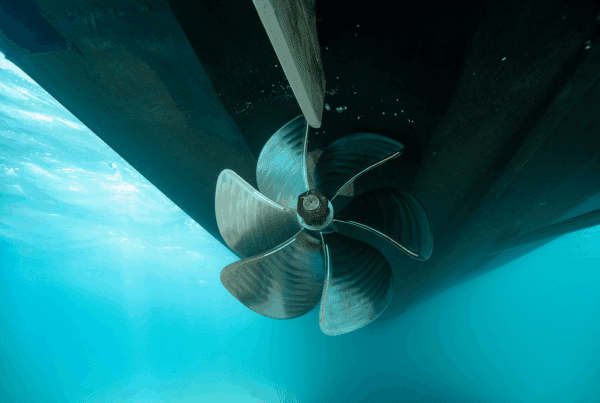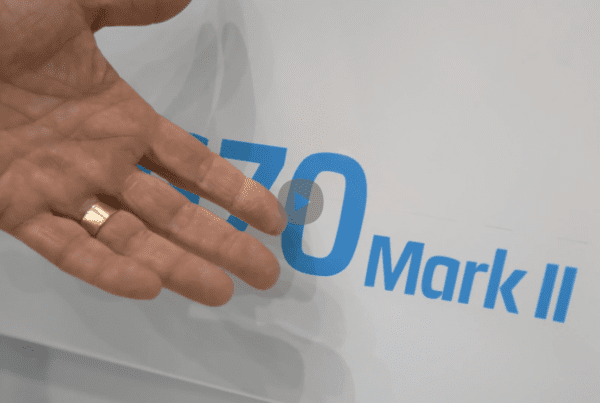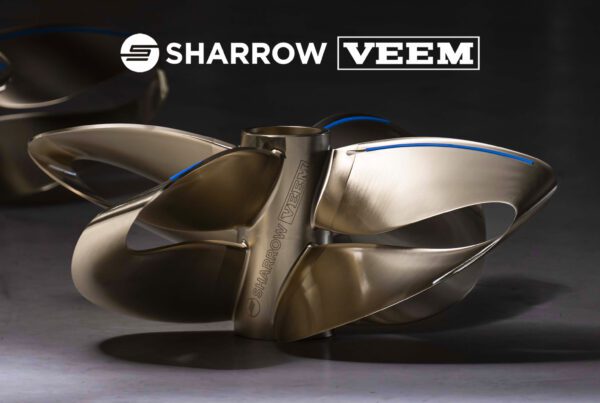The key technical features that differentiate modern marine gyrostabilizers are as follows:
Vertical vs Horizontal Spinning Axis
Theoretically both approaches produce effective stabilizing torque; however, there are a couple of noteworthy differences. The main issue with a horizontal spinning axis is that it does not allow the use of natural precession. The resistance of the slewing-ring type bearings used is excessive, and requires the precession oscillation motion be driven to overcome this resistance.
Another limitation of a horizontal spin axis is that it is not convenient to provide the precession motion with an equilibrium point at zero precession angle. For vertical-spin-axis gyrostabilizers, it is possible to arrange the precession bearing shafts so that the centre of gravity of the cage assembly holding the flywheel is lower than the shaft-line. This ensures that the precession angle always tends on average, towards vertical. This feature allows the advantages of natural precession to be utilised.
Natural vs Driven Precession
As described above, gyrostabilizer precession oscillation motion is a naturally occurring response. Utilising this naturally occurring precession motion means that the stabilizing torque of the gyrostabilizer is always perfectly synchronised with the vessel roll, regardless of how quick, slow, or random the rolling motion may appear. This eliminates any inefficiencies caused by slow sensors, electrical or hydraulic systems and ensures timely response in all conditions.
For vessels with longer roll periods, the lower roll rate in small waves may result in less torque created to provide full precession oscillation range. This can create a band of rolling motion in which the gyrostabilizer responds less vigorously than it could. On board, this may be seen as a lack of responsiveness in small waves. Driving the precession oscillation motion can eliminate this dead-band. This option may be advantageous for some megayachts, or larger commercial vessels. The downside is the additional power requirements, space, and cost of the motive power unit. The driven precession oscillation option requires either PTO hydraulic pumps or a separate power pack.
Active vs Passive Precession Motion Control
Most modern gyrostabilizer feature active precession control. This is a key technological advancement that gives modern gyrostabilizers their high efficiency across a wide range of conditions.
In order to ensure optimal performance across a wide range of wave conditions without the need for user adjustments, the control system should also be adaptive. Adaptive control systems automatically search for optimal control settings without needing to be tuned by an operator. When executed well, this means the system is both simple to use, and continually optimized.
Robustness
A key, but often over-looked feature of gyrostabilizers is the robustness of the base frame and the precession-motion-control system. As larger waves cause larger rolling rates, the torque induced in the precession axis continues to grow. In order to control the increased precession rates, the mechanism for controlling the precession motion must be able to over- come these ever increasing torques. When the torque induced in the precession axis exceeds the capacity of the precession control mechanism, the gyro must either shut down to protect itself from damage or progressively de-rate to achieve the same. An under-sized precession control mechanism will result in premature shut-down as wave conditions build.
VEEM Gyros are designed and built to ensure that they continue to provide roll stabilization as seas become severe.
